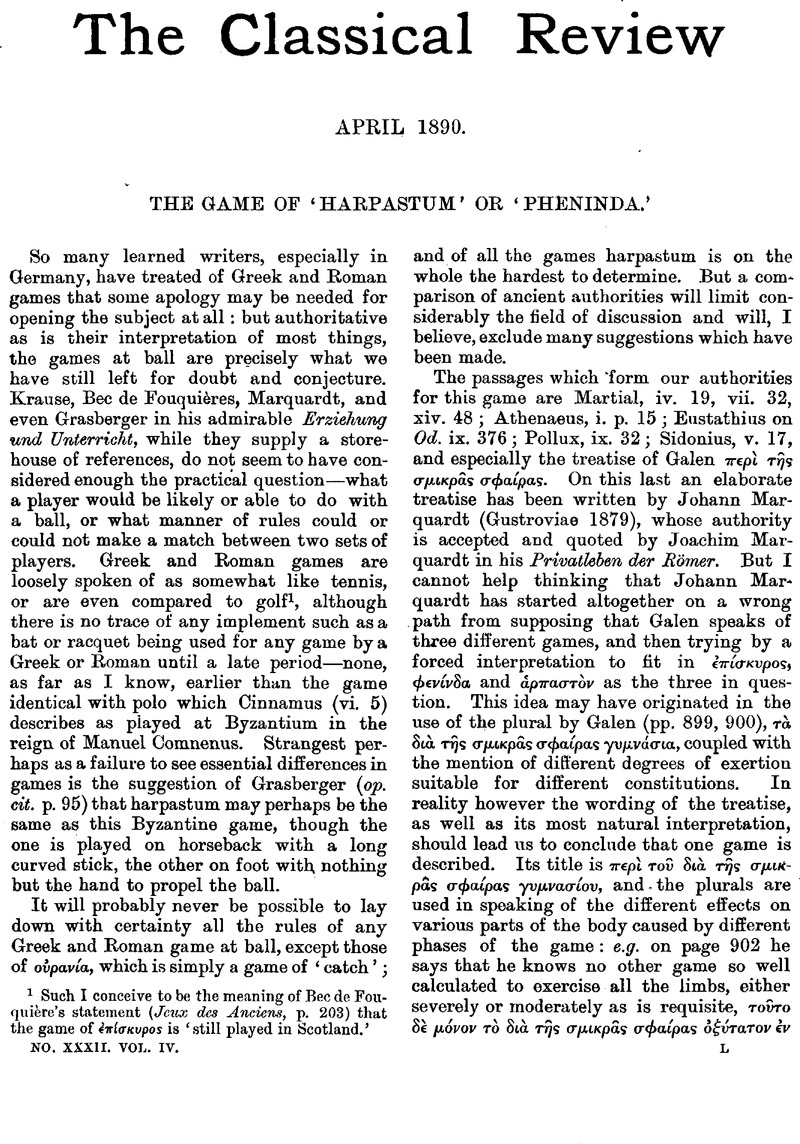Article contents
The Game of ‘Harpastum’ or ‘Pheninda.’
Published online by Cambridge University Press: 27 October 2009
Abstract

- Type
- Review Article
- Information
- Copyright
- Copyright © The Classical Association 1890
References
page 145 note 1 Such I conceive to be the meaning of Bec de Fouquiére's statement (Jeux des Anciens, p. 203) that the game of ⋯φ⋯σκυρος is ‘still played in Scotland.’ NO. XXXII. VOL. IV.
page 146 note 1 I have mentioned football as a familiar instance where players differing in activity and strength can find suitable places in one and the same game; but it may be well to guard against the idea that football any sort was played in ancient Greece and Rome. Johann Marquardt (among others) speaks of the ball being kicked in harpastum as well as thrown, and cites as his authority Bec de Fouquiéres, who certainly makes the statement but cites no authority at all. I know of no passage in Greek or Latin literature which gives ground for this idea, which seems to have arisen from the mention of jugglers, such as Ursus Togatus (Orelli 2591), who caught and tossed balls with their feet. Galen speaks of the exercise to the arms in throwing: had kicking been allowed, he would have mentioned that as exercising the legs, but he assigns to them the exercise of running only.
page 147 note 1 I strongly suspect that for ‘nec intercideret tramitem nee caveret’ we should read et intercideret &c.
- 4
- Cited by


